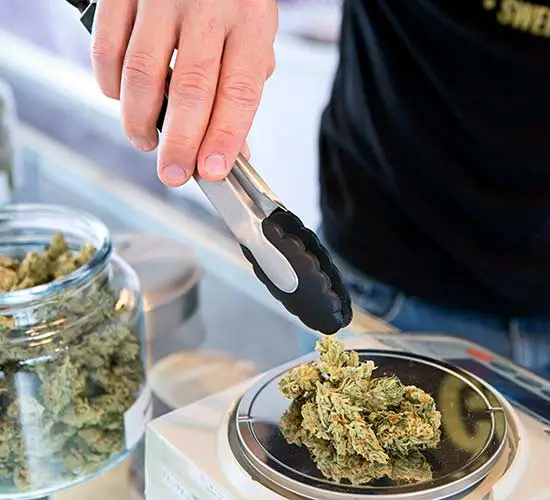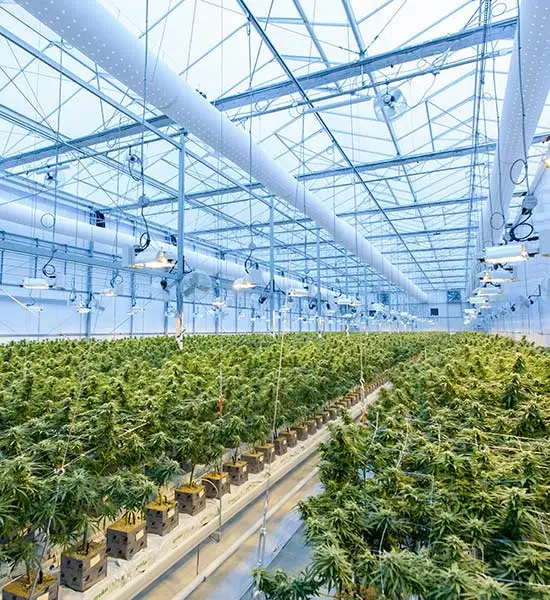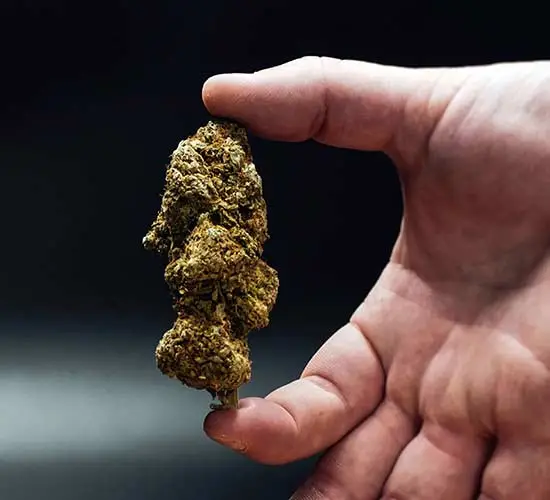What do we mean by cannabis trends? The cannabis industry is undergoing a remarkable transformation. It is propelled by shifting attitudes, evolving regulations, and groundbreaking innovations. As we navigate through 2024, it’s crucial to keep a finger on the pulse of emerging cannabis trends. After all, they will shape the future of cannabis consumption, production, and regulation. In this article, we’ll explore some of the key trends to watch in the cannabis landscape this year and beyond.
Cannabis Trends: Legalization and Regulation
The trend towards cannabis legalization continues to gather steam worldwide. In 2024, we anticipate further strides in legalization efforts. You can expect more regions to recognize the medicinal and recreational use of cannabis. However, along with expanded access comes increased regulation. Governments seek to ensure public safety and address concerns about youth access and impaired driving. Navigating this complex regulatory landscape will be paramount for businesses and consumers alike.

Legislative Reform
- Legalization for Medicinal Use: Many regions are enacting legislation to legalize cannabis for medical use. This would allow patients to access cannabis-based treatments for various medical conditions.
- Legalization for Recreational Use: Some jurisdictions are moving towards legalizing cannabis for recreational uses. This, as we know, permits adults to purchase and consume cannabis products for non-medical purposes. The minimum age to buy cannabis varies from state to state.
Taxation and Revenue Allocation
- Cannabis Taxes: Governments are imposing taxes on cannabis sales. This would, of course, generate revenue for public services and programs.
- Revenue Allocation: Funds generated from cannabis taxes are allocated to various initiatives They include education, healthcare, drug prevention, and community development.
Regulatory Framework Establishment
- Licensing and Permitting: Governments are establishing frameworks for licensing and permitting cannabis businesses, including cultivation, processing, distribution, and retail operations.
- Quality Control and Testing: Regulations are being implemented for the quality and safety of cannabis products through testing requirements for potency, purity, and contaminants.
- Packaging and Labeling Requirements: Guidelines are being put in place for the packaging and labeling of cannabis The aim is to provide consumers with accurate information and warnings.
Public Health and Safety Measures
- Youth Protection: Measures are being implemented to prevent youth access to cannabis. These include age restrictions on purchase and consumption, as well as education and prevention campaigns.
- Impaired Driving Prevention: Regulations to address concerns about impaired driving under the influence of cannabis. Expect more roadside testing and penalties for driving under the influence!
Social Equity Initiatives
- Equity Programs: Some jurisdictions are implementing social equity programs to address the disproportionate impact of cannabis prohibition on marginalized communities. These include initiatives to promote minority ownership and employment in the cannabis industry.
- Expungement of Cannabis Convictions: Efforts are underway to expunge criminal records for cannabis-related offenses. These efforts may provide relief to individuals with past convictions and removing barriers to employment and housing.
International Cooperation and Regulation
- International Agreements: Countries are collaborating on international agreements and conventions to regulate cannabis cultivation, trade, and consumption.
- Harmonization of Standards: Efforts are being made to harmonize regulations and standards for cannabis products to facilitate international trade and ensure consistency in quality and safety measures.

Innovative Trends in Cannabis Product Development
The cannabis industry is no stranger to innovation! 2024 promises to be a year of groundbreaking advancements in product development. From novel delivery methods to cutting-edge extraction techniques, expect to see a wave of innovative cannabis trends sweeping across the market. One particularly exciting area of growth is the development of wellness-focused cannabis products. This segment caters to consumers seeking natural remedies for many health and wellness concerns.
In addition to wellness-focused cannabis products, we anticipate significant advancements in the development of novel and specialized cannabis products tailored to meet the diverse needs of consumers. In 2024, expect to see an expansion of product offerings. We mean, beyond traditional flower and oils! Expect to see new products with an emphasis on convenience, discretion, and precise dosing. From fast-acting edibles and dissolvable strips to transdermal patches and inhalable concentrates, the possibilities are endless. These innovative products not only provide consumers with greater choice and flexibility. They also reflect the industry’s ongoing commitment to meet evolving consumer preferences and demands.

Rise of Wellness and Functional Cannabis Products
As awareness of the potential health benefits of cannabis continues to grow, so too does demand for wellness and functional cannabis products. CBD, in particular, has emerged as a star player in the wellness space. It is touted for its anti-inflammatory, analgesic, and anxiolytic properties. In 2024, we can expect to see an expansion of CBD-infused products. They could range from skincare and beauty products to beverages and supplements.
Building upon the growing popularity of CBD-infused products, 2024 is poised to witness an even broader array of offerings catering to consumers’ wellness needs. Beyond CBD, other non-psychoactive cannabinoids such as CBG (cannabigerol) and CBN (cannabinol) are gaining attention for their potential therapeutic effects, further diversifying the wellness product landscape. In addition to skincare and beverages, expect to see CBD and cannabinoid-infused supplements, topicals, and even pet products hitting the shelves.
As research into the therapeutic properties of cannabinoids continues to advance, we can anticipate even more changes. Lookout for innovative formulations and applications designed to support holistic well-being and enhance quality of life. Whether you’re seeking relief from pain, stress, or sleep disturbances, the future of cannabis wellness products holds promise for addressing a wide range of health concerns naturally and effectively.
Cannabis Trends: Sustainability and Environmental Responsibility
In response to the growing urgency of environmental concerns, the cannabis industry is undergoing a profound shift toward sustainable practices aimed at minimizing its ecological footprint. In 2024, this commitment to sustainability encompasses every aspect of the cannabis supply chain, from cultivation to packaging and distribution.

Cultivation
One area of focus is the adoption of eco-friendly cultivation methods that minimize resource consumption and environmental impact. Sustainable cultivation practices include the use of renewable energy sources such as solar and wind power, as well as water-saving techniques such as drip irrigation and rainwater harvesting. Additionally, organic and regenerative farming practices are gaining traction, emphasizing soil health and biodiversity while reducing reliance on synthetic fertilizers and pesticides.
Packaging & Recycling
Beyond cultivation, the cannabis industry is exploring innovative solutions to reduce packaging waste and promote recycling. In 2024, expect to see a proliferation of compostable and biodegradable packaging materials made from renewable resources such as hemp fiber and cornstarch. Companies are also embracing minimalist packaging designs and lightweight materials to minimize carbon emissions associated with transportation.
Distribution
Furthermore, sustainable transportation and distribution practices are gaining prominence as companies seek to reduce their carbon footprint. This includes optimizing delivery routes, utilizing electric or hybrid vehicles, and exploring alternative transportation modes such as rail and sea freight to minimize emissions from long-distance transportation.
As consumers increasingly prioritize sustainability in their purchasing decisions, companies that demonstrate a commitment to environmental stewardship stand to gain a competitive edge in the market. By embracing sustainable cultivation, packaging, and distribution practices, the cannabis industry can not only reduce its environmental impact but also contribute to the broader transition toward a more sustainable and regenerative economy.

Personalization & Customization Trends


Expansion Trends in Cannabis Tourism
Cannabis tourism is on the rise, with legalization opening up new opportunities for travelers seeking cannabis-friendly destinations and experiences. In 2024, we can expect to see the continued expansion of cannabis tourism offerings, from guided dispensary tours to cannabis-themed accommodations and events. As more regions legalize cannabis, the economic impact of cannabis tourism will become increasingly significant. Several regions around the world are experiencing a boom in cannabis tourism due to legalization efforts and the growing acceptance of cannabis culture. Some of the notable destinations include:
Colorado, USA
As one of the first states to legalize recreational cannabis, Colorado has become a hotspot for cannabis tourism. Visitors can enjoy guided tours of dispensaries, cannabis-friendly accommodations, and cannabis-infused experiences such as cooking classes and yoga sessions.
California, USA
With its thriving cannabis industry and stunning landscapes, California attracts cannabis enthusiasts from around the globe. From the iconic dispensaries of Los Angeles to the scenic cannabis farms of Northern California’s Emerald Triangle, there’s no shortage of experiences to enjoy.
Amsterdam, Netherlands
Amsterdam has long been synonymous with cannabis tourism, thanks to its famous coffee shops where visitors can purchase and consume cannabis products. While regulations have tightened in recent years, Amsterdam remains a popular destination for cannabis enthusiasts seeking a unique and laid-back experience.
Jamaica
Known for its reggae music and laid-back vibes, Jamaica has embraced cannabis tourism in recent years. Visitors can explore cannabis plantations, attend ganja-themed events and festivals, and even participate in Rastafarian ceremonies where cannabis plays a central role.
Canada
Since legalizing recreational cannabis in 2018, Canada has emerged as a burgeoning cannabis tourism destination. Cities like Toronto and Vancouver offer a vibrant cannabis scene, with dispensaries, lounges, and events catering to both locals and tourists alike.
Uruguay
As the first country in the world to fully legalize cannabis, Uruguay has become a pioneer in cannabis tourism. Visitors can explore cannabis clubs, attend educational workshops, and immerse themselves in Uruguay’s unique cannabis culture.
These destinations represent just a few examples of the growing global trend of cannabis tourism. As more regions around the world legalize cannabis, the opportunities for cannabis-related travel experiences are only expected to expand.
We haven’t mentioned Michigan in the list. Buchanan is on the rise as a popular cannabis tourism destination. We have a whole blog post on it – check it out here.

Cannabis and Technology Integration
Technology plays an increasingly central role in the cannabis industry It is driving efficiencies, improving product quality, and enhancing the consumer experience. In 2024, we anticipate continued integration of technology across various aspects of the cannabis supply chain, from cultivation and extraction to distribution and retail. Blockchain technology, in particular, holds promise for enhancing transparency and traceability within the industry.
Cultivation Technology
- Smart Sensors: Monitoring environmental conditions in real-time for optimized plant growth.
- Automated Irrigation Systems: Ensuring precise water delivery to cannabis crops.
- Machine Learning Algorithms: Analyzing data to predict crop yields and detect potential issues early.

Extraction and Processing Technology
- Supercritical CO2 Extraction: Producing high-purity cannabinoids and terpenes for concentrates and extracts.
- Cryogenic Ethanol Extraction: Extracting cannabinoids and terpenes at ultra-low temperatures for improved purity.
- Nanotechnology: Enhancing the bioavailability and efficacy of cannabis products through nanoemulsion and encapsulation techniques.
Blockchain Technology
- Transparency and Traceability: Recording every transaction on a secure and immutable ledger to track the journey of cannabis products from seed to sale.
- Compliance Assurance: Ensuring compliance with regulations and bolstering consumer confidence in product quality and safety.
Retail Technology
- Point-of-Sale Systems: Streamlining transactions and inventory management for cannabis retailers.
- Digital Signage: Enhancing in-store marketing and communication with customers.
- E-commerce Platforms: Facilitating online sales and delivery of cannabis products to consumers.
- Virtual Reality (VR) and Augmented Reality (AR): Creating immersive shopping experiences for consumers to explore product offerings and learn about cannabis.
These technologies are revolutionizing various aspects of the cannabis industry, from cultivation and processing to distribution and retail, driving efficiencies, improving product quality, and enhancing the overall consumer experience.

Social Equity and Inclusion
Despite the significant progress in cannabis legalization, social equity remains a pressing issue within the industry. In 2024, there’s a hopeful anticipation for heightened efforts to promote diversity and inclusion in cannabis ownership and employment. This is especially so in communities disproportionately affected by the war on drugs. The implementation of robust social equity programs holds great promise not only in rectifying historical injustices but also in fostering a more equitable and inclusive future for the cannabis industry.
These programs aim to provide opportunities for people from marginalized backgrounds to participate in and benefit from the growing cannabis market. By prioritizing diversity and inclusion, the industry can ensure that the economic benefits of legalization are shared equitably among all members of society. Moreover, fostering a diverse workforce and leadership within cannabis companies can lead to a more innovative and responsive industry that better serves the needs of its consumers. In essence, social equity initiatives are not just about righting past wrongs. They are also about building a stronger, fairer, and more sustainable cannabis industry for generations to come.
Conclusion
As we look ahead to the future of cannabis in 2024 and beyond, one thing is clear: the industry is poised for continued growth, innovation, and evolution. By staying in tune with emerging trends and embracing opportunities for collaboration and advancement, we can help shape a cannabis landscape that is both prosperous and equitable for all.
Are you ready to explore the future of cannabis? Stay tuned to our blogs for the latest updates on cannabis industry trends, product launches, and more. Join the conversation on social media and share your thoughts on the future of cannabis in 2024. Together, let’s shape a brighter future for cannabis.
The information provided is not a substitute for professional medical advice, diagnosis, or treatment. Consult with a qualified healthcare professional for personalized advice based on your medical condition.




